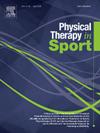慢性踝关节不稳定伴慢性韧带联合损伤的复发性扭伤主要与跖屈不稳定和多感觉缺陷相关
IF 2.2
3区 医学
Q1 REHABILITATION
引用次数: 0
摘要
目的探讨慢性踝关节不稳定(CAI)和慢性胫腓联合损伤(CSI)患者的姿势控制缺陷与复发性踝关节扭伤的关系。DesignCross-sectional设计。设有运动实验室和骨科。研究对象:73例CAI患者和15例健康对照。主要结局指标:根据关节镜检查结果将CAI患者分为CAI组(孤立CAI)和CSI组(伴有CSI的CAI)。姿势控制采用感觉组织测试、适应性测试和Romberg测试进行评估。结果与CAI组和对照组相比,CSI组的躯体感觉、视觉和前庭功能评分显著降低,视觉依赖性显著提高(p <;0.05 - -0.001)。在跖屈摆动中,CSI组比CAI组表现出更高的摆动能量(p <;0.05)。相关分析显示,扭伤发生率与跖屈曲摆动能有很强的相关性(r = 0.68, p <;0.001), VAS评分(r = 0.54, p <;0.001)和躯体感觉缺陷(r = - 0.43, p <;0.001)。logistic回归模型的AUC为0.906,表明模型性能良好(p <;0.001)。结论我们的研究结果发现,尽管存在多感觉缺陷,CSI的跖屈曲不稳定与踝关节扭伤的风险相关性最强。因此,康复应该解决这些缺陷,疼痛管理和有针对性的训练。本文章由计算机程序翻译,如有差异,请以英文原文为准。
Recurrent sprains of chronic ankle instability with chronic syndesmotic injury are primarily correlated with plantarflexion instability and multisensory deficits
Objective
To investigate postural control deficits and their correlation with recurrent ankle sprains in patients with both chronic ankle instability (CAI) and chronic syndesmotic injury (CSI).
Design
Cross-sectional design.
Setting
Motion laboratory and Orthopedic department.
Participants
73 individuals with CAI and 15 healthy controls Main outcome measures: Patients with CAI were divided into a CAI group (isolated CAI) and a CSI group (CAI with CSI) based on arthroscopic findings. Postural control was evaluated using the Sensory Organization Test, Adaptability Test, and Romberg Test.
Results
The CSI group had significantly lower somatosensory, visual, and vestibular scores and higher visual dependency compared to CAI group and controls (p < 0.05-0.001). CSI groups showed higher sway energy than the CAI in the plantarflexion sway (p < 0.05). Correlation analysis indicated strong associations between sprain incidence and plantarflexion sway energy (r = 0.68, p < 0.001), VAS scores (r = 0.54, p < 0.001), and somatosensory deficits (r = −0.43, p < 0.001). The AUC for the logistic regression model was 0.906, indicating excellent model performance (p < 0.001).
Conclusions
Our results found that plantarflexion instability of the CSI correlates most strongly with the risk of ankle sprains, despite coexisting multisensory deficits. Hence, rehabilitation should address these deficits, pain management and targeted training.
求助全文
通过发布文献求助,成功后即可免费获取论文全文。
去求助
来源期刊

Physical Therapy in Sport
医学-康复医学
CiteScore
4.50
自引率
8.30%
发文量
125
审稿时长
39 days
期刊介绍:
Physical Therapy in Sport is an international peer-reviewed journal that provides a forum for the publication of research and clinical practice material relevant to the healthcare professions involved in sports and exercise medicine, and rehabilitation. The journal publishes material that is indispensable for day-to-day practice and continuing professional development. Physical Therapy in Sport covers topics dealing with the diagnosis, treatment, and prevention of injuries, as well as more general areas of sports and exercise medicine and related sports science.
The journal publishes original research, case studies, reviews, masterclasses, papers on clinical approaches, and book reviews, as well as occasional reports from conferences. Papers are double-blind peer-reviewed by our international advisory board and other international experts, and submissions from a broad range of disciplines are actively encouraged.
 求助内容:
求助内容: 应助结果提醒方式:
应助结果提醒方式:


